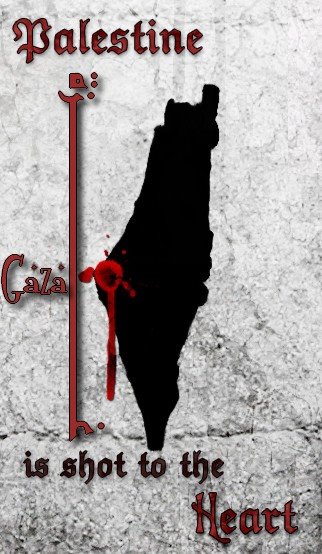
 Album :
Album :
Alfonso X el Sabio: Cantigas de Santa Maria
ألـفـونــســو الــعــاشــر: قــصــائــد ســانــتــا مــاريــا
♪
Artists :
Joel Cohen And Abdelkrim Rais Andalusian Orchestra of Fès
جـويــل كــوهـيــن و أوركـســترا عــبــدالــكــريــم الــرايـــس للـطــرب الانــدلـســي بـفــاس
••» Camerata Mediterranea, Joel Cohen, dir : •»Françoise Atlan (voice) •» Hayet Ayad (voice) •» Anne Azéma (voice) •» Equidad Bares (voice), Joel Cohen (lute, voice) •» Shira Kammen (harp , vielle)
••» Abdelkrim Rais Andalusian Orchestra of Fès, Mohammed Briouel, dir : •» Aziz Alami (taar, voice) •» Abdessalam Amri (darbouka, voice) •» Mustapha Amri (viola, voice) •» Mohammed Briouel (violin, viola, voice) •» Salah Charki (canun) •» Saïd Chraibi (tenor, voice) •» Rachid Lebbar (ud, voice)
♪
Index :
http://www.medmusique.org/
http://www.bostoncamerata.org/
http://www.hayet-ayad.com/
http://en.wikipedia.org/wiki/Joel_Cohen_(musician)
http://en.wikipedia.org/wiki/Françoise_Atlan
http://en.wikipedia.org/wiki/Alfonso_X_of_Castile
http://anneazema.com/
http://www.saidchraibi.com/
http://www.medmusique.org/
Booklet الــكــتــيــّــب Livret
♪
Note :
High among the many achievements of the Spanish King Alfonso X, called "El Sabio" -- the Wise (1221-1284) is the superb collection of more than 400 sacred songs to the Virgin Mary, the celebrated Cantigas de Santa Maria. King Alfonso's Cantigas are the most important examples of vernacular song from the Spanish Middle Ages; more than that, they are a summit of medieval Christian spirituality. They are preserved in several large and elaborate manuscripts prepared at the royal court; and while it is doubtful that the King composed all of the songs personally, it is clear that he was closely involved, emotionally and materially, in their compilation
While we can never be sure exactly how the musicians at King Alfonso's court might have interpreted these songs, we have everything to gain in our hypothetical reconstructions by calling on musical traditions currently outside, but once closely related to, European musical practice. Accordingly, we have asked an outstanding ensemble of current Moroccan masters to supply accompaniments to the vocal lines set out in the manuscript pages, using the instruments they currently employ in their own repertoire. These instruments are, in many cases (lute, canun, percussion) virtually the same as those shown in the medieval manuscript, or, in the case of the Moroccan violin and alto, closely related thereto... Furthermore, the possible relationship between Arabic musical art and the music of medieval Spain goes far beyond the question of instrumental morphology. The classical Arabic music of North Africa is called "Andalusian music," and its contemporary practitioners are conscious of perpetuating a system of musical thought and practice which is traced back to the Muslim courts of medieval Spain. Four hundred years after the "reunification" of Spain under a Christian Kingdom, the once- closely-related traditions of Christian and Muslim Spain have, inevitably, grown apart. But what is astonishing to the "occidental" student of Arabic classical music is how much the current tradition contains that is self-evidently very ancient. The modes of Andalusian music as currently practiced in Morocco are very similar to those employed in the European Middle Ages. The exotic microtones associated with "oriental" music in the Western imagination, are absent from this classically-codified musical sysyem. The scales are composed, like Gregorian chant, of tones and semitones arranged in different patterns according to the mode. Thus, the practitioner of Arabo-andalusian repertoire can assimilate the medodies of the Cantigas to his own instrument or voice with little disruption, and even with delectation. And, as we happily discovered during the weeks of preparatory collaboration, many melodic elements found in the Cantigas are still employed in Arabo- andalusian music. The Arabo-andalusian pieces that serve as preludes and postludes to the Cantigas on this recording were chosen for their intrinsic beauty first of all, but also for their musical kinship with certain Cantigas melodies. The musical modes of these Arabic pieces are the same as those of the Cantigas that preced or follow, and while they at no point replicate the medieval "European" melodies note-for-note, you will hear any number of musical motifs and patterns in the Arabic pieces that can be perceived as variants, or first cousins, to motifs in the Cantigas tunes
♪
Language : Spanish - Instrumental
♪
Country : Morocco - USA - Algeria - France (Christians, Jews and Muslims)
♪
Melodies :
[.01.] Nawba Ramal al-Maya..Bughya (overture) / instrumental...Alfonso el sabio (attr.): Cantigas de Santa Maria • [.02.] Cantiga 100: Santa Maria strela do dia • [.03.] Cantiga 406: Benvennas mayo • [.04.] Cantiga 370: Loemos muit'a virgen • [.05.] Cantiga 90: Solas fusti senlleiira • [.06.] Cantiga 52: Mui gran dereit / instrumental • [.07.] Nawba Gharibat al-Husayn..Tushiyas (prelude) instrumental...Alfonso el sabio (attr.): Cantigas de Santa Maria • [.08.] Cantiga 230: Todo me deve dar loor • [.09.] Cantiga 130: Quen entender quiser • [.10.] Cantiga 56: Gran dereit • [.11.] Nawba Iraq al-Ajam..Mizan Darj - Sana "Kouli Lmalihti" / instrumental...Alfonso el sabio (attr.): Cantigas de Santa Maria • [.12.] Cantiga 320: Santa Maria leva • [.13.] Cantiga 200: Santa Maria Loei • [.14.] Cantiga 417: Nobre don e muy precado • [.15.] Nawba Gharibat al-Husayn..Mizan Bacit - Sana "Kad nilto hibbi" / instrumental...Alfonso el sabio (attr.): Cantigas de Santa Maria • [.16.] Cantiga 140: A Santa Maria dadas • [.17.] Nawba Rasd al-dhil..Mizan Koddam - Sana "Allah hoo Yalamo"...Alfonso el sabio (attr.): Cantigas de Santa Maria • [.18.] Cantiga 250: Por nos virgen madre
.
♪
╔══╗
♪♪
║██║
║♪♪║♥ ♪ Download From Here. [130 Mo] ♪
╚══╝
♪
.



























































































